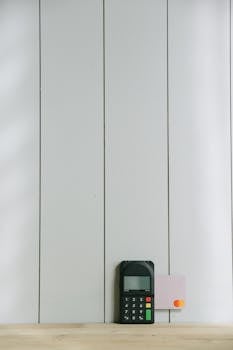
If you use Flatpak apps on Linux, do yourself a favor and install Bazaar to make your app management life a bit easier. Bazaar is a modern, user-friendly Flatpak app store that offers a refreshing alternative to the often-clunky default options found on many distributions. It's a must-have for any serious Flatpak user.
Bazaar: The Flatpak App Store Linux Deserves
If you use Flatpak apps on Linux, do yourself a favor and install Bazaar to make your app management life a bit easier. Bazaar is a modern, user-friendly Flatpak app store that offers a refreshing alternative to the often-clunky default options found on many distributions. It's a must-have for any serious Flatpak user.
Introduction
Flatpak has revolutionized application distribution on Linux, offering a consistent and secure way to install and manage software across different distributions. However, the experience of browsing, installing, and updating Flatpak apps can vary widely depending on the app store provided by your distribution. Many default app stores feel outdated, slow, or lack essential features. This is where Bazaar steps in to fill the gap.
Bazaar is designed from the ground up to be a modern and efficient Flatpak app store. It aims to provide a seamless and enjoyable experience for discovering and managing your Flatpak applications. It's not just another app store; it's a thoughtfully crafted tool that enhances the overall Flatpak ecosystem.
Why Choose Bazaar Over Other App Stores?
Bazaar offers several key advantages over traditional app stores, making it a compelling choice for Linux users who rely on Flatpak.
A Clean and Intuitive Interface
One of the first things you'll notice about Bazaar is its clean and intuitive interface. The app is well-organized, making it easy to browse through categories, search for specific applications, and view detailed information about each app. The design is modern and consistent, providing a visually appealing experience.
Example: Compare Bazaar's interface to the default GNOME Software Center. While GNOME Software Center can be functional, it often feels cluttered and slow. Bazaar, on the other hand, feels much snappier and easier to navigate.
Advanced Search and Filtering
Finding the right app can sometimes be a challenge, especially with the growing number of Flatpak applications available. Bazaar offers advanced search and filtering options to help you narrow down your choices. You can filter apps by category, source (Flathub, etc.), and even by specific features.
Tip: Use the search filters to find apps that are specifically designed for a certain task, such as image editing or video playback. This can save you time and effort in finding the perfect tool for your needs.
Detailed App Information
Before installing an app, it's important to have as much information as possible. Bazaar provides detailed information about each app, including its description, screenshots, reviews, permissions, and dependencies. This allows you to make informed decisions about which apps to install.
Example: Bazaar displays the permissions an app requests in a clear and understandable way, allowing you to assess the potential security risks before installing. Other app stores may bury this information or present it in a less user-friendly format.
Seamless Updates and Management
Keeping your Flatpak apps up to date is essential for security and stability. Bazaar makes it easy to manage your installed apps and install updates with just a few clicks. The app also provides notifications when updates are available, ensuring that you're always running the latest versions.
Tip: Configure Bazaar to automatically check for updates in the background. This will help you stay up to date without having to manually check for updates every time.
Support for Multiple Flatpak Remotes
While Flathub is the most popular Flatpak repository, it's not the only one. Bazaar supports multiple Flatpak remotes, allowing you to install apps from other sources as well. This gives you access to a wider range of applications and allows you to choose the repositories that best suit your needs.
Example: You can add a custom Flatpak remote to install apps that are not yet available on Flathub. This is especially useful for developers who want to test their apps before submitting them to the main repository.
Installing Bazaar
Installing Bazaar is straightforward. The easiest way to install it is through Flathub itself. You can either use your existing app store to find and install it, or use the command line:
```bash
flatpak install flathub com.github.harryghg.Bazaar
```
Once installed, you can launch Bazaar from your application menu.
Configuring Bazaar
After installing Bazaar, you might want to configure it to your liking. Here are a few things you can customize:
- Appearance: Choose between light and dark themes.
- Notifications: Configure how often Bazaar checks for updates and how notifications are displayed.
- Remotes: Add or remove Flatpak remotes.
Troubleshooting Common Issues
While Bazaar is generally reliable, you may occasionally encounter issues. Here are a few common problems and their solutions:
- App not found: Make sure you have the correct Flatpak remote enabled.
- Installation failed: Check your internet connection and disk space.
- App crashes: Try updating the app or reinstalling it.
If you encounter any other issues, consult the Bazaar documentation or seek help from the community.
Conclusion
Bazaar is a fantastic Flatpak app store that significantly improves the experience of managing Flatpak applications on Linux. Its clean interface, advanced features, and seamless updates make it a must-have for any serious Flatpak user. If you're looking for a better way to browse, install, and manage your Flatpak apps, give Bazaar a try. You won't be disappointed. It's the Flatpak app store that Linux deserves, and it should honestly be installed by default on every distribution.
